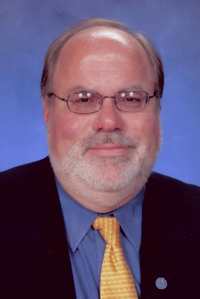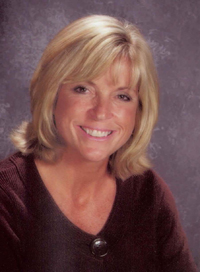Bulletin News

07/20/2010
A partnership between SUNY Cortland and regional school districts takes a step forward with plans for a Tully (N.Y.) Central Schools
 |
| Michele Ferrio McNerney '86 and Kraig Pritts C.A.S. '96 (shown to the left) are bound for Australia. |
principal and elementary school teacher to spend two weeks in Queensland, Australia, visiting the same public schools where many Cortland students are honing their skills as future teachers.
Tully Superintendent Kraig Pritts C.A.S. ’96 and elementary schoolteacher Michele Ferrio McNerney ’86, both SUNY Cortland graduates, travel “down under” in late July to launch a pilot program. They hope to expand it to include other districts in the Regional Professional Development School (RPDS) partnership with SUNY Cortland, said Marley Sweet Barduhn ’76, M ’79, the College’s assistant provost for teacher education.
She encouraged and oversees the College’s new International Link Program as an extension of the RPDS partnership that has been in development since 2006. The 14 schools and two Board of Cooperative Educational Services district partners share ideas among member teachers, administrators, professors and college students.
The College’s eight-year ties to Australia’s public schools on the Sunshine Coast facilitated the International Link Program’s creation on behalf of its primary and secondary school partners, Barduhn asserts.
The Tully District is piloting the International Link Program as a possibility for other RPDS schools.
Since 2003, SUNY Cortland has sent 74 student teachers to spend the first part of their student teaching semester in selected Sunshine Coast state schools. Pritts and McNerney will visit the current group of student teachers while immersing themselves in the culture and educational system of one of those schools, Mountain Creek State School in Mooloolaba, Australia.
“They will see our students in action,” Barduhn said of the Tully District contingent. “This will be an opportunity for professional development. The superintendent will see how schools are run in Australia, which will be very eye opening because schools are run very differently than in the U.S. This will give the grade school teacher a chance to experience what life is like in an Australian classroom.”
The pair will sample a wide gamut of Australian public schools, Barduhn said.
“For example, the Currimundi Special School is where kids with special needs can be educated,” she said. “In Australia, parents have the option of enrolling their child in an inclusive, regular classroom or they can place their child in a special school that is geared to very high-needs children. Currimundi offers a pool where a waterproof wheelchair can take a student down into that pool. There are advantages to going to a special school because it has more services than are provided in a regular school. In the U.S., the inclusive classroom, segregated classrooms or home schooling are pretty much the only choices.”
She clarified some other differences to be found in the Australian educational system.
“They’re going to see education in a cross-cultural context,” Barduhn noted. “They’re going to see how excellent schools in a different country operate toward the same ends. They’re going to see a more integrated curriculum. They will see how this is a culture that has an additional month of schoolwork, ranging from 212 to 220 days, whereas New York schools have a minimum of 180 days. Their summer vacation is only from mid-December until Feb. 1. It’s only six weeks of vacation. They’re on a quarter system.”
The cultural differences will be striking.
“They will get to experience morning tea,” Barduhn said. “It’s part of the culture, unlike Americans, who are so schedule-driven. We get in, hit the deck and work until we go home at night. In Australian schools, they get the job done, but they do get these social breaks. The children don’t drink tea, but they have juice and snacks. There are no gymnasia there, because the gymnasium is out of doors. They have no cafeterias but a ‘tuck’ shop, where you can get something to eat. And all of the public school students will be in uniforms.”
Mountain Creek State Schools offer an International Baccalaureate Program as part of the Education Queensland School.
“Pritts and McNerney will see state-of-the-art educational technology being used and experience an international diversity,” Barduhn said. “The school is suburban, on the edge of the Sunshine Coast, and there are international students in the high school in particular who will be there because of the IB school. The teachers will get a chance to see how students from many different backgrounds will work together in this environment.”
The program exposes local educators to new learning methods which they may implement back home. Pritts and McNerney will share their new vision of education in presentations to the Tully district as well as the community and region.
The pilot project was four years in the planning and, if successful, could grow, Barduhn said.
Through the International Link Program, the school district also would like to have a teacher from Australia hosted in the Tully District during the 2010-11 school year, Pritts noted.
Indeed, Australian educators have expressed an interest in studying the American educational system and experiencing a winter climate for perhaps the first time in their lives when visiting the U.S. during Australia’s “summer vacation,” from mid-December to Feb. 1, Barduhn noted.
In addition to hosting and participating in various international student exchange programs, the Tully schools have hosted educators from Australia and Japan in recent years, Pritts noted.
“The International Link Program is part of an ongoing effort to expand the world and opportunities for our students,” Pritts said. “We hope to go in there with open minds and learn a lot. I don’t intend to preconceive anything.”
“What I think I will get out of it, after having spoken and met with some of the Australian administrators in the past, is the difference in philosophy of education and how to implement a more student-focused approach to education.
“Frequently our education system is in lockstep with what was developed in the 1800s, which was more designed around a system than it was around the students. And the student focus is to improvise more individualized educational opportunities. We have to meet students where they are and not make students come to us. Otherwise they will tune out. My sense is that Australia is very flexible in that sense. I just want to learn more about some of the approaches they take about it.”
“I plan to be an absolute sponge for learning on behalf of my school district,” said McNerney. “I will closely shadow the teachers and really pick up on what they really feel most strongly about and their best practices for effective teaching. We have a lot of good things going on at Tully but it’s always good to collaborate with a different school district.”
She plans to observe closely the Australian approaches to primary education in particular, but also with an open mind to feedback she can share with her middle and high school colleagues.
“It’s very driven in Australia but they really embrace the whole child,” said McNerney, who discovered and honed her passion for teaching as a SUNY Cortland undergraduate.
“Although I student-taught in Tully 20 years ago and didn’t have this opportunity then, I just thought how this feels like I have come full circle,” McNerney said. “I’m excited that there will be one or two Cortland students in the building I will be in and I will get to be a learner right alongside them.”
“We consider SUNY Cortland as a major partner in our programming and professional development and we hope we’re playing a major part in growing our future leaders of our system of education,” Pritts added. “We’ve done some innovative things with SUNY Cortland that are perhaps the first in the state, such as setting up videoconferencing so students in their freshmen or sophomore year at SUNY Cortland can experience a classroom in real time without all the logistical problems of actually coming to the school. We’re very excited about the trip and the future possibilities that could come from it, as is our Board of Education.”

